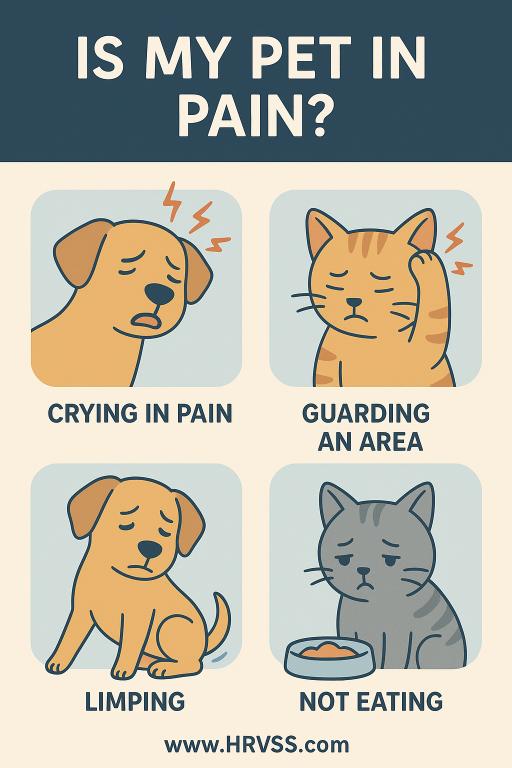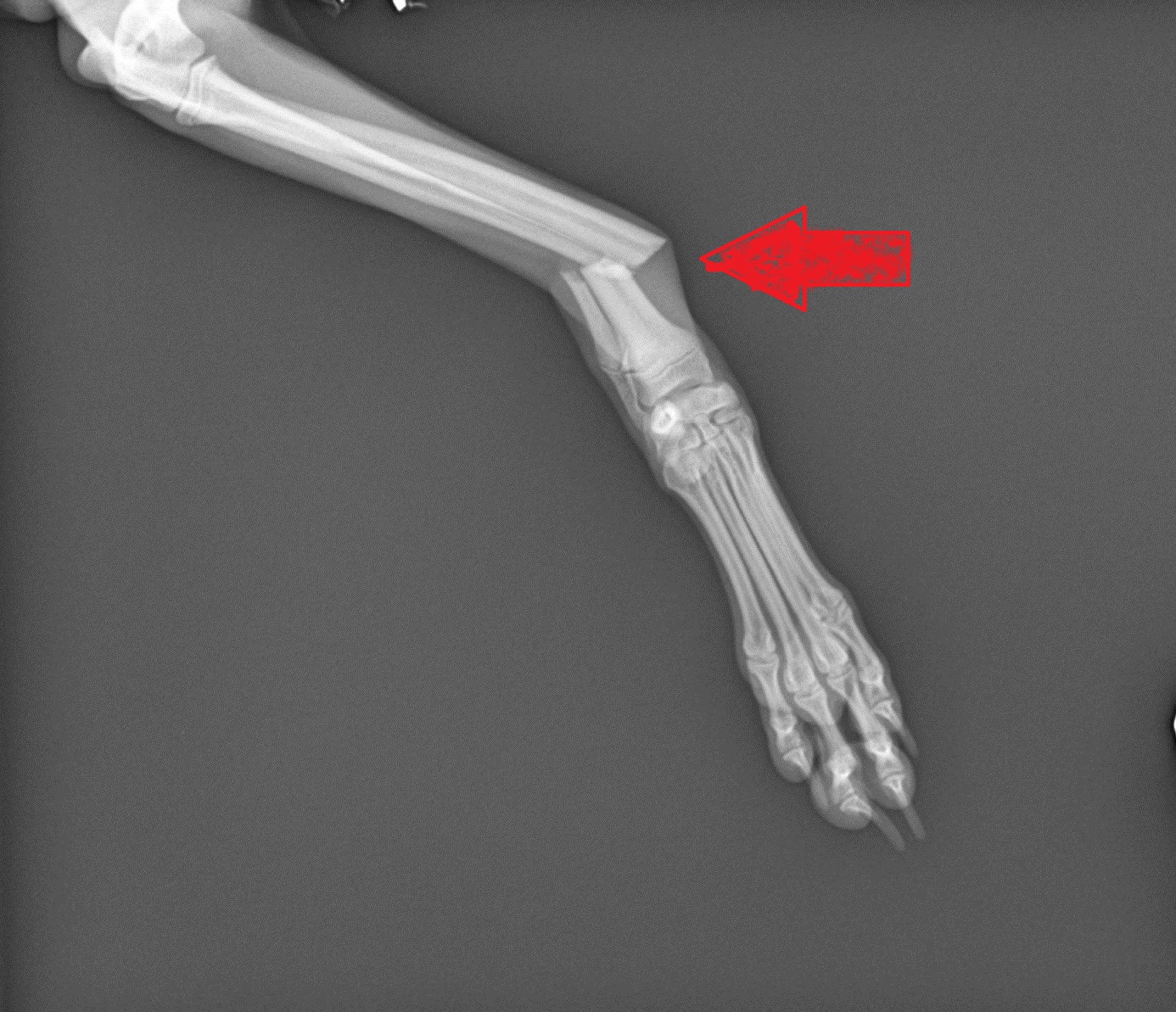This is a very common question, which we will try to answer today.
Granted, pain can vary dramatically from breed to breed, and from pet to pet.
But here are some general guidelines about 4 obvious signs of pain.

1. Crying
If you step on your pet’s paw, they mostly likely will cry out in pain.
But most of the time, when the pain is constant, many pets will not cry when they are in pain.
Remember, in the wild, if an animal acts sick, they might get eaten.
Unfortunately, our pets are very good at hiding symptoms until their body can’t take it anymore.
That makes the job of a pet owner and a vet much tougher!
By the way, crying includes vocalizing, whimpering, screaming, moaning, etc.
2. Limping
This is probably one of the biggest misconceptions.
Many don’t think limping is a big deal.
Yet 99% of the time, LIMPING = PAIN.
Think about yourself: if you have a pebble in your shoe, you will shift weight to your other leg to relieve the pain. Therefore, you will technically be lame because you know if will decrease the pain.
If your pet holds the leg up, it’s because they know that if they put weight on it, it’s going to hurt. So they learn, and they limp or hold the leg up to stop the pain.
In our practice, the most common reason for limping in a back leg is a torn ACL.

3. Guarding
If you try to touch your pet’s surgery area or a specific body part and they move away, or become vocal, or even aggressive, it is likely from pain.
A classic example is severe ear disease.
Your pet may start to refuse your treatment with ear drop. They may become “head shy.” That’s typically a sign of pain.
A related subtle sign of pain is a difference in tail movement. A tucked tail, or not wagging the tail as much, could be an early sign of pain.
4. Not eating
One of the most common reasons a pet refuses to eat, even their favorite food, is related to pain.
In many cases, it can be the first sign something is wrong – or the only sign.
Then again, there are many other reasons a pet is less hungry than usual, especially right after surgery. It may take a few days after anesthesia to things to get back to normal.
If you would like to learn how we can help your pet with pain management or safe surgery and anesthesia, please contact us through www.HRVSS.com
Never miss a blog by subscribing here: www.HRVSS.com/blog
Phil Zeltzman, DVM, DACVS, CVJ, Fear Free Certified
Pete Baia, DVM, MS, DACVS
www.HRVSS.com
